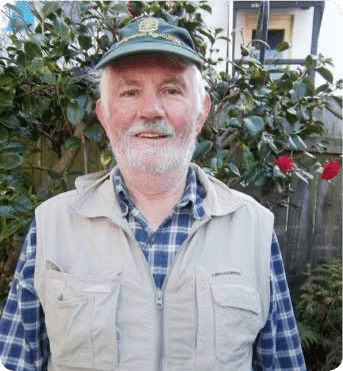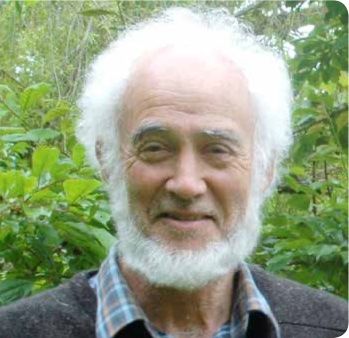Small School Starts Biodynamic Journey
Harvest Article – Winter 2016
Motueka Steiner School’s dream of schooling children on a farm is being realised. By Peter Garlick
Read moreHarvest Article – Winter 2016
Motueka Steiner School’s dream of schooling children on a farm is being realised. By Peter Garlick
Read moreGrowing vegetables using biodynamic methods can create gardens of extraordinary health and productivity. Living soil, nourished by regular applications of compost, careful plant rotations, and the biodynamic preparations, can steadily improve in structure and health. The daytime sun, nighttime moon, rain, wind and all the life within the garden offer challenges and opportunities for the grower to insert themselves within this seasonal dance and emerge with edible crops.
Read moreBotany Spot by David Millin
Marrubium vulgare (white horehound) is a common pasture weed of the Lamiaceae family native to Europe, west and central Asia, and North Africa. It was introduced to Australia and New Zealand in the nineteenth century as a medicinal herb.
It is a woody-based perennial with multi-branched stems and grey green leaves that resemble mint. It can grow to be 80 cm tall. The flowers are white and grow in dense whorls in the leaf axils. Post-flowering there is significant dieback after setting seed, and the flowers turn to burrs that are spread in the wool and fur of grazing animals. It spreads easily in disturbed or overgrazed pasture and due to its bitter taste is unpalatable to livestock. In southern Australia it is considered a noxious weed.
It has been used since ancient times as a remedy for coughs and sore throats and as an expectorant. It has been listed as a remedy for expelling worms in farm animals, and modern scientific studies have been conducted on the usefulness of horehound. For example, a 2011 study concluded that the essential oil of M. vulgare contains potent antimicrobial and anticancer properties, while a 2012 study found marrubiin, one of the primary active compounds found in horehound, to possess “antidiabetic, anti-atherogenic and anti-inflammatory properties.” It is also used in the manufacture of horehound candy and horehound beer.
At Weleda, Marrubium is used to produce our Cough Elixir remedy. We harvest the leaf and soft fleshy stems prior to flowering in the spring, when leafy growth is at its maximum. These are then dried and stored until needed. In the manufacturing process, Marrubium leaf is decocted in boiling water, along with various other herbs that are useful in treating cold and flu symptoms, such as plantain and thyme.
Biodynamics and intention on the Seresin wine-farm. By Daniel Honan
“There’s something we don’t talk about, which I think is the most intriguing thing about wine,” says Colin Ross, Estate Manager at Seresin in Marlborough. “We ignore the alcohol, the 12.5%, which is a spirit, and not all alcohol has the same effect, so, as potential drug growers it’s something we should all be conscious of.”
Read moreRachel Pomeroy is a wealth of knowledge on biodynamics in New Zealand. She has travelled extensively, especially in India, sharing her experience of biodynamics, stargazing and planting calendar use. Rachel makes all the biodynamic preparations and is a keen home gardener.
Sometimes a best conventional farmer becomes a best biodynamic farmer. And the same is true of gardeners. Sometimes a best conventional gardener becomes a best biodynamic gardener.
I have a particular farmer in mind when I speak of a “best farmer.” He is Sarvdaman Patel, a lifelong dairy, fodder and vegetable producer in Gujarat, India, who converted to biodynamics in 2000. But what I say could equally apply to several men and women I have met over the years, each of them examples of best biodynamic farmers or gardeners who were previously best conventional farmers or gardeners.
Read moreAndrew Seagar speaks from experience
Over the past 25 years, I’ve worked in many different agricultural and horticultural situations. They have ranged from a 500-acre mixed biodynamic farm on the Kaipara, to the two-acre Demeter market garden that I’ve developed south of Hastings since 1991.
I’ve worked in 15 schools, developing food gardens with primary and intermediate children, since the ’90s. I’ve done compost demonstrations through local councils, OANZ and education trusts.
Making compost combines art and science beautifully. If more schools did science lessons around a compost heap, we wouldn’t have the fragmented, over-specialised science we have today.
Read more
I started thinking about biodiversity in New Zealand because of changes to the Demeter Standards. They now require ten percent of a farm to be set aside as a biodiversity reserve. That can include hedges, streams, trees, shelterbelts, stone walls, headlands and a number
of other items. I think that many New Zealand farms, especially family farms, whether biodynamic or otherwise, would have little trouble passing this test. In fact, many farmers go much further than this in ways that I suspect many city folk are unaware of.
Article excerpt reprinted with permission from Elementals Journal #135.
Most seed used by conventional (chemical) farmers is usually treated to protect the seed from pests and fungal attack. These coatings are generally toxic to the microorganisms in the soil.
Sattler and Wistinghausen, in their book Bio-Dynamic Farming Practice, discuss seed baths in some detail, along with grain selection and germination trials.
They note that Martha Kuenzel and Franz Lippert have done numerous seed bath trials over many years and developed a seed treatment that strengthens the vitality and resistance of plants. Their experiments investigated the benefits to different plants whose seeds were treated by pre-soaking with particular biodynamic preparations.
Read moreHarvest Article – Autumn 2018
Flowform expert Ian Trousdell explores the energetic properties of water.
Water is central to all life. It manifests in the form of living beings and as the blood, lymph and sap which rhythmically sustains them. Water also mediates cosmic information flowing into natural life forms, as light frequencies penetrate organisms’ internal liquids – supplying a mysterious life energy which is the core of personal health and good quality food. Materialistic science knows this energy exists but considers it to be a byproduct of the operations of physical chemistry. Biodynamic thinking, on the other hand, holds that this energy operates in a higher dimension than the physical, coexisting formatively within it.
More Information on Ian Trousdell’s work: www.flowform.net
Read moreGary Williams – philosopher, professional soil and water engineer, permaculture consultant and teacher, and biodynamic farmer – offered a fascinating presentation at the 2017 conference that drew on his diverse experiences and wove together many intricate ideas. He summarises that talk here.

Water plays such an important role in physical and living processes that its flow patterns and influences are fundamental to our life experiences.
At the same time, our understanding of water and its flow patterns, and our relationships with water, depend on our worldview. A worldview is the cultural framework we use to understand our experiences and the world around us; it conditions our view of reality and how things happen.
There are as many worldviews as there are cultures, communities and people in the world. However, there is an interesting duality in our cultural worldview, as expressed in the question of quantum mechanics: ‘Is it a particle or a wave?’ Is it a moving object or is it an energy field?
